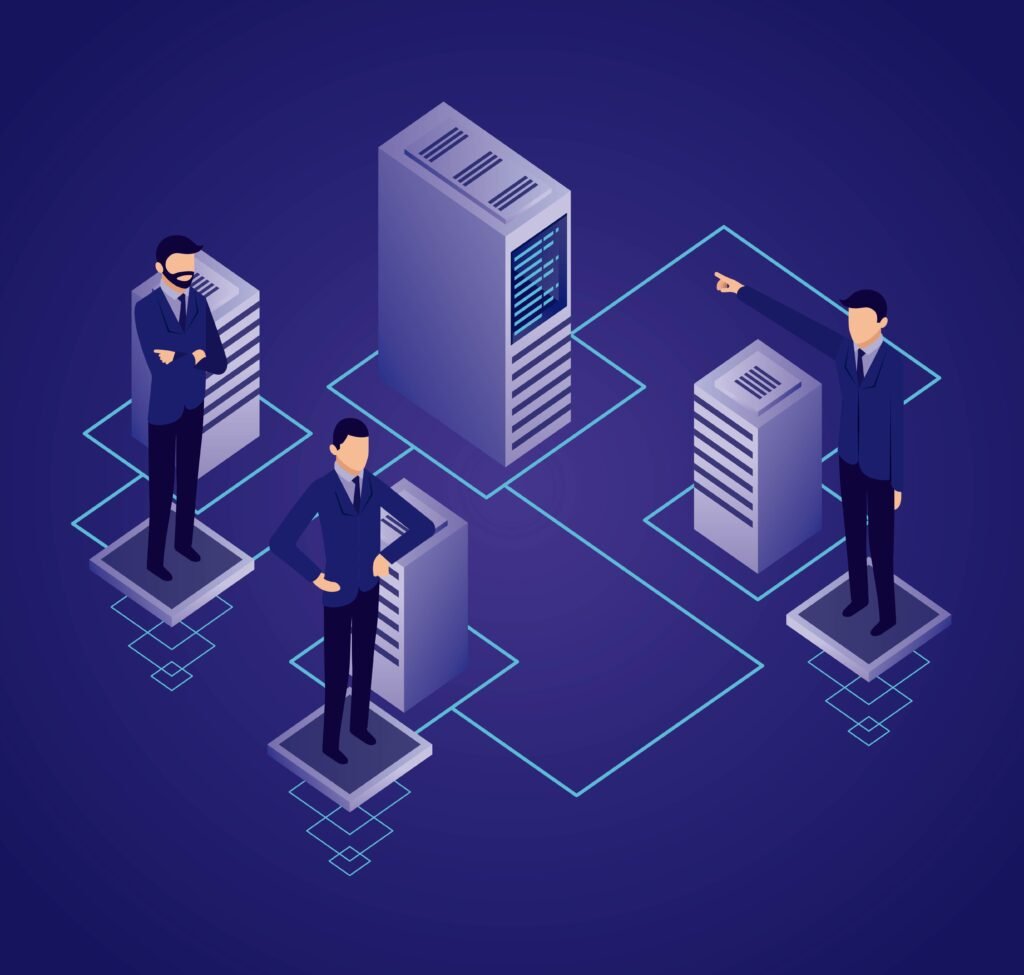For years, cloud computing has been the backbone of digital transformation. But as data volumes explode and organizations demand real-time insights, the cloud alone can’t keep up. This shift has given rise to a powerful new technology—edge computing. In 2025 and beyond, edge computing is reshaping how businesses process, store, and use data, making it one of the most significant innovations in the tech world today.
In this blog, we’ll explore why edge computing is becoming the dominant force in digital innovation, and why so many experts believe it represents the edge computing future we’re accelerating toward.

🔹 What Is Edge Computing?
Edge computing processes data closer to the source—such as sensors, machines, IoT devices, and local servers—rather than sending everything to a centralized cloud.
In simple terms:
Instead of moving data to the cloud, the processing happens at the “edge,” where the data is generated.
Why this matters:
- Faster response times
- Lower bandwidth consumption
- Improved security and privacy
- Greater reliability for mission-critical applications
This localized approach to computing gives businesses the ability to make real-time decisions, even in environments with limited connectivity.
🔹 Why Edge Computing Is Rising So Fast
The demand for real-time insights is higher than ever. Industries like healthcare, manufacturing, retail, and transportation rely on instant data to function smoothly. Traditional cloud systems introduce delays, but edge computing eliminates most of that lag.
Major drivers behind its rise include:
- Explosion of IoT Devices
From smart sensors to wearable devices, IoT is generating massive amounts of data. Processing all of it in the cloud is too slow and expensive. - Need for Ultra-Low Latency
Applications like autonomous cars, AI robotics, smart factories, and AR/VR systems require instant processing. - Enhanced Data Privacy Requirements
Many industries must keep sensitive data on-site due to compliance laws. Edge computing enables localized data handling. - Growing Network Strain
Bandwidth limitations make it difficult to push everything to the cloud. Edge reduces this burden significantly. - AI Adoption Everywhere
AI models running at the edge improve decision-making speed and reduce dependency on cloud resources.
These factors combined are propelling edge computing into the spotlight as the future of data processing.
🔹 How Edge Computing Works (Simple Breakdown)
Think of the edge as a mini data center located close to your devices. It includes:
- Edge gateways
- Edge servers
- Local processing nodes
- Embedded chips and microcontrollers
Process flow:
- Data is generated by a device →
- Processed locally at the edge →
- Only necessary information is sent to the cloud
This reduces latency, increases security, and cuts down on cloud usage costs.
🔹 Benefits That Make Edge Computing the Future
1. Ultra-Fast Processing for Real-Time Applications
Edge computing enables sub-second processing—crucial for industries like:
- Autonomous vehicles
- Video surveillance analytics
- Remote patient monitoring
- Industrial automation
When decisions must be made instantly, edge wins over cloud every time.
2. Stronger Data Privacy & Security
Since data stays local, the risk of exposure during transit decreases. Sensitive data—financial, medical, or personal—no longer needs to leave the premises.
Edge also reduces attack surfaces by limiting large-scale data transfers.
3. Lower Bandwidth and Cloud Costs
Instead of sending large datasets to the cloud, only essential processed data is transferred. This means:
- Lower operational costs
- Improved network performance
- Faster scalability for organizations
4. Greater Reliability & Resilience
If the internet goes down, cloud systems break. But edge computing continues working even offline.
This makes it essential for:
- Manufacturing floors
- Oil rigs
- Remote locations
- Smart cities
- Telecommunications infrastructure
Edge ensures business continuity regardless of external conditions.
🔹 Industries Transformed by Edge Computing
1. Healthcare
Real-time patient monitoring, wearable health sensors, and AI diagnostics rely on instant data analysis. Edge computing saves lives by reducing delays.
2. Manufacturing & Industry 4.0
Smart factories use sensors, robotics, and automation systems. Edge ensures smooth production lines and predictive maintenance.
3. Retail & Smart Stores
Edge-powered systems handle smart checkout, video analytics, inventory automation, and customer behavior tracking.
4. Autonomous Vehicles & Smart Transportation
Self-driving cars require microsecond decisions. Edge nodes in vehicles and road infrastructure make transportation safer.
5. Smart Homes & Smart Cities
From smart traffic lights to energy monitoring, edge improves responsiveness and reduces dependence on the cloud.
These sectors show why the edge computing future is becoming mainstream.
🔹 Edge + Cloud: The Hybrid Future
While edge computing is powerful, it doesn’t replace the cloud. Instead, businesses are adopting edge-cloud hybrid architecture:
- Edge handles real-time processing
- Cloud handles long-term storage, backups, training AI models
This hybrid model is the future of digital infrastructure—combining speed, intelligence, and scalability.
🔹 Challenges to Overcome
Even though the rise of edge computing is unstoppable, businesses must overcome a few challenges:
- Managing many distributed devices
- Securing multiple edge locations
- Integration with existing cloud systems
- Hardware costs for edge nodes
- Standardization of edge frameworks
Organizations that address these challenges early will gain a competitive advantage.
🔹 Final Thoughts
Edge computing is reshaping the digital world by bringing intelligence closer to where data is created. Its ability to deliver real-time insights, improve privacy, reduce cloud dependency, and enhance reliability makes it one of the most transformative technologies of our time.
As IoT, AI, robotics, and 5G expand, edge computing will become even more essential—driving the edge computing future that businesses must embrace to stay ahead.
Companies that invest in edge architecture today will be the ones leading innovation tomorrow.
